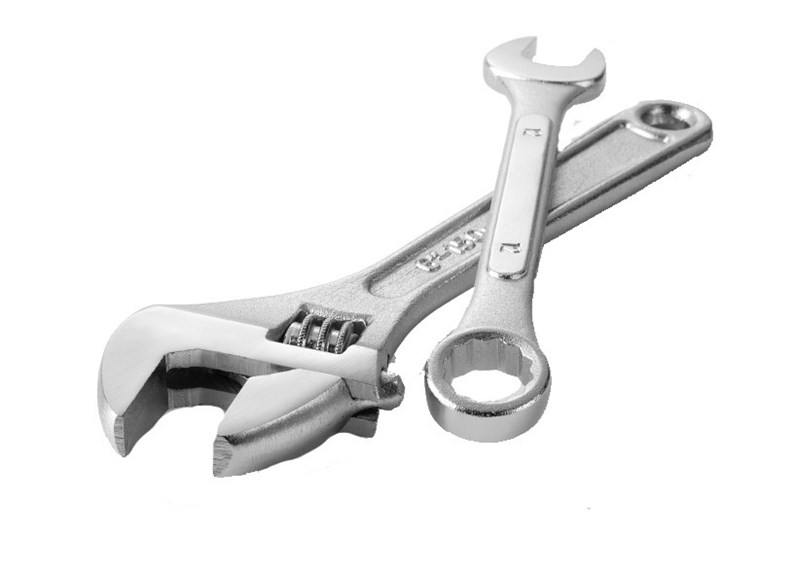You would think that something as important as the roof over one's head would be one of the top priorities for condo owners and association members, but for some reason, roofs are often one of the most overlooked aspects of a building or multifamily community.
People in the industry call the roof "the fifth wall," and the top of the structure is obviously the building's first and most important line of defense against the harsh elements, which can be responsible for a damaged of defective roof membrane. That can lead to major damage to a building and its occupants' possessions.
People don't often think about caring for a roof until a problem arises. They often have no system in place for monitoring the condition of the roof on a consistent basis. Considering that severe weather conditions such as ice, snow, heat and heavy rain can play havoc with a roof's surface, regular checking for wear-and-tear is a must.
"A roof is essential to maintain," says Robert Martin of Roof Maintenance Systems in Farmingdale. "People realize it quickly when something wrong starts to happen. But sometimes that can be too late."
Cold Hard Facts
As any New Jersey resident who has lived through a blistering summer, a freezing winter or even the torrential rainfall of this past October can tell you, their roofs are faced with some nasty weather conditions throughout the year.
"In the simplest terms, all weather conditions are bad for a roof," says Martin. "In the cold weather, a roof will freeze and thaw which causes cracking over time. When it's hot, the roof is exposed to threatening ultraviolet rays which destroy the resins."
Ice is a major problem, not only during the thawing process but also when it backs up the roof's drainage system. On a sloped roof, the ice backs up and damages the gutters, thus diverting water into the house itself. It has the same effect on a flat-roof high-rise where the drains freeze. You get snow and ice backup, which causes thermal shock to the roof, which in turn causes expansion slips. Obviously it also becomes a weight problem because a sufficient amount of water is preventing from draining off the roof.
On Top of Things
The most basic concept of a roof is that it is intended to shed water. A shingle roof is designed with the basic precept that the roofing underlayer and shingles are overlapped so that water running down a roof will be shed and directed away from the building.
"If the water flow is down-slope, it is doing its job," says roofing contractor David Zanolli, of Centimark Corporation in Roselle. "A flat roof is also intended to shed water and actually should not be totally flat. A properly designed flat roof will actually include tapered insulation to facilitate water flow to the roof drains."
Roofing experts also warn about wind and ice damming, which can result in water flowing back up the slope. When that happens, a roof is more likely to leak.
Evaluation Report
There are many factors that go into evaluating the best roofing alternatives for a building. To begin with, the decision first needs to be made as to whether to remove the existing roof or to leave it in place and overlay it with the new roof.
"For buildings with flat roofs, such as mid or high-rise buildings, one factor to consider is whether the existing roof insulation is wet," says Russ Fernandes of Becht Engineering Co. Inc., an engineering and consulting firm in Liberty Corner. "If only small sections of the insulation are wet, they can be replaced prior to installing the overlay. If large portions of the roof are wet, then the entire roof should be removed prior to installing a new one."
New Jersey building codes will allow up to two roof layers, but roofing over an existing wet roof will trap the moisture beneath the roof membrane and result in the premature failure of the new roof.
If the existing roof is to be left in place, care needs to be taken to select the roof material and procedures that are most compatible with the existing roof.
"Townhouse roofs are typically covered with asphalt shingles," Fernandes says. "Variables that will affect the material selection include the roof slope, anticipated wind speeds, climate, and existing roof construction. Many townhouse associations are electing to install laminated shingles, which are heavier and considered more aesthetically appealing, as opposed to the more economical three-tab shingle."
Patch Work?
You don't always have to replace an entire roof when there is damage. Often, sections of a shingle roof can be patched instead.
"Especially with a localized leak," says Zanolli. "If there's something wrong with one particular area, we won't recommend having the entire roof redone. However, eventually all roofs will have to be replaced. They don't last forever."
One consideration for deciding whether to repair of replace a roof concerns the look of the finished product.
"It can sometimes be difficult to match the color of an existing roof due to weathering of the roof and/or changes in manufacturer's color formulations," Fernandes says. "A patched roof that doesn't match the existing roof can be unsightly and can adversely affect the curb appeal of a community."
Since flat roofs normally can't be seen from the ground, its appearance is less of an issue. Patching and repairs are part of roof maintenance, along with coating the roof to protect from the ultraviolet rays of the sun.
Material Issues
When it comes time to rebuilding a roof, most townhouses and condominiums typically use the same products. Most roofers will recommend that for flat roofs, built-up or modified bitumen or EPDM (ethylene propylene diene monomer) polymer, a type of rubberized roofing system, are used. For townhouses, most agree that asphalt shingles— either standard three-tab or laminated architectural grade shingles —be installed.
"When it comes to roofing materials, we recommend the time-tested standard products," Fernandes says. "New products are frequently introduced, but it's typically best to avoid using them until they have been proven effective in the field."
Taking Responsibility
When a roof does have problems, there may be some finger-pointing as to who is responsible, the individual unit owners or the association. The entity responsible does vary and is typically spelled out in the association's master deed and/or bylaws.
"With flat roofs on mid- or high-rise buildings, the roofs are typically common elements of the association and the association is responsible for repairs, maintenance and replacements," says Fernandes. "We do see instances where the roofs are not common elements and then the unit owner would be responsible for repairs and replacements."
Rising Problems
In addition to weather, there are a number of things that can cause damage to roofs with the number-one culprit being people, since most roof membranes aren't intended for regular foot traffic.
Zanolli says that while people may think it's fun to entertain on a rooftop or just sit out there for the sun, the damages that humans can inflict on the membrane of a roof are many. Some things that should be no-no's are sunbathers on chairs, cigarettes, and maintenance workers who drop screws and tools that can ruin the surface of the roof.
In some instances, walking pads can be installed to accommodate servicing of roof-mounted equipment, like antennas or satellite dishes. Mechanical equipment, (depending on its size and weight), must either be placed on proper isolation materials or, in the case of larger equipment, on a separate structural frame supported above the roof membrane.
"Occasionally, we're asked to design a roof that will include a roof deck where residents can hold parties or just use as a sun deck," Fernandes says. "In those cases, special precautions have to be taken, such as the use of special protection boards and pavers to protect the roof membrane while still allowing for drainage."
Quality Time
The best way to ensure a quality job is to hire a design professional, with experience in the field of roofing designs to prepare a roof design and specification for the project. The final cost will depend on the type of roof and whether the new roof will be an overlay or a total removal and replacement.
"Many building owners will try to go directly to the roofing contractor for a bid, however, the contractor's bid may be for the roof system that they are most familiar with, and not necessarily the system that is best for the particular application," Fernandes says. "The design professional is independent of any manufacturers and should be able to identify the roof system that best fits the application."
Whatever your community's circumstances, with conscientious maintenance and upkeep, your roof (or roofs) will keep the elements at bay for years and years. The key is to inspect regularly, call in experienced, qualified professionals whenever needed, and be ready to invest in the "fifth wall" of your community's homes.
Keith Loria is a freelance writer and a frequent contributor to The New Jersey Cooperator.







Comments
Leave a Comment